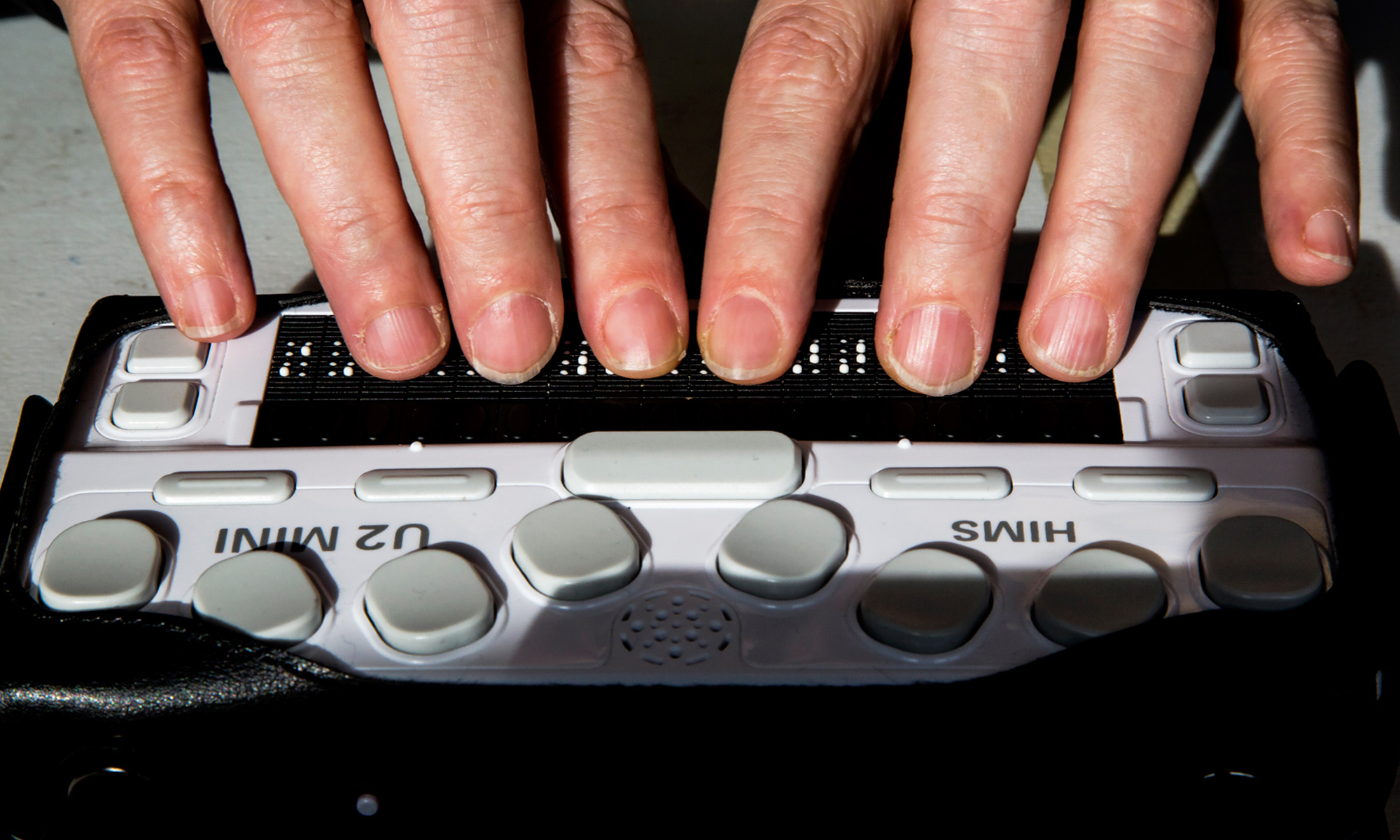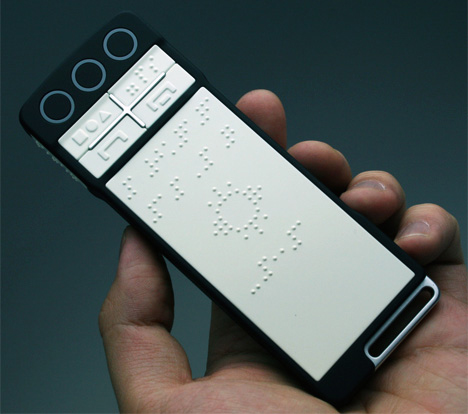Mobility Aids for Visually Impaired Users: Moving Through the World with Confidence
Mobility Aids for Visually Impaired Users: Moving Through the World with Confidence
Blog Article
Discover Ingenious Tools Made for the Aesthetically Damaged
The growth of cutting-edge tools for the visually damaged stands for a substantial advancement in accessibility and self-reliance. Technologies such as smart glasses with AI capacities and mobile applications created to provide acoustic descriptions are improving everyday experiences for customers. In addition, wearable gadgets that employ haptic feedback enhance ecological awareness, while contemporary Braille innovations provide new means to involve with message. As these tools proceed to evolve, their influence on the lives of those with visual impairments raises important questions regarding the future of inclusivity and freedom in various aspects of life. What exists in advance in this technological landscape?
Smart Glasses for Navigation

Smart glasses created for navigating are transforming the means aesthetically impaired individuals communicate with their environment. These advanced tools use a combination of video camera technology, expert system, and acoustic comments to provide real-time details about environments. By utilizing challenge detection systems, clever glasses can notify users to possible risks, making it possible for more secure mobility in both unknown and familiar settings.
The integration of GPS modern technology further boosts navigation capacities, allowing individuals to receive auditory instructions as they move. This hands-free strategy not only cultivates freedom however likewise empowers visually damaged individuals to browse city landscapes with enhanced self-confidence. Furthermore, numerous clever glasses are equipped with functions that recognize landmarks and street indicators, supplying contextual info that boosts the customer experience.
In addition, the development of these gadgets is continually progressing, with companies functioning to improve the accuracy of object acknowledgment and increase the variety of navigational functions. As clever glasses come to be a lot more obtainable and budget friendly, they hold the prospective to considerably change every day life for visually impaired users. Eventually, these ingenious tools represent a crucial step towards inclusivity, offering boosted flexibility and a greater sense of autonomy for individuals browsing the world around them.

Mobile Apps for Daily Living
Just how can mobile applications improve the every day lives of visually damaged individuals? Mobile apps are changing the method aesthetically impaired users browse their atmospheres, manage everyday jobs, and gain access to details. These applications offer essential assistance with various functionalities, cultivating self-reliance and boosting top quality of life.
Several ingenious mobile apps are made particularly for daily living. As an example, apps like Be My Eyes attach aesthetically impaired individuals with sighted volunteers through video clip telephone calls, allowing them to obtain real-time support with jobs such as reading labels or browsing unknown rooms. Similarly, Seeing AI, created by Microsoft, uses fabricated intelligence to define environments, checked out message, and identify objects, successfully changing a mobile phone right into an effective tool for everyday support.
In addition, navigation apps customized for the visually impaired, such as Aira and BlindSquare, provide audio-based instructions and ecological information, enabling individuals to traverse their surroundings safely and confidently. Beyond navigation and instant help, mobile apps likewise support organization and job monitoring, with attributes that aid customers establish suggestions, create order of business, and track appointments. In summary, mobile applications work as vital sources, equipping aesthetically damaged individuals to lead even more independent and meeting lives.
Wearable Technologies for Help
Empowerment with innovation is increasingly apparent in the realm of wearable gadgets made to aid visually impaired individuals. These innovative tools integrate seamlessly into daily life, enhancing navigating and giving crucial comments to individuals. Smart glasses outfitted with video cameras can review and recognize faces message aloud, permitting individuals to communicate more with confidence in social and specialist setups.
An additional noteworthy advancement is using haptic feedback systems in wearable devices. These systems use resonances or other responsive signals to communicate information concerning the individual's environment, such as barriers or modifications in terrain, improving flexibility and safety. Wearable innovations also consist of wristbands that link to smartphones, alerting individuals to notices via subtle resonances, thus boosting connectivity without dependence on visual signs.
As these innovations proceed to develop, they are not just improving freedom for visually damaged individuals yet also cultivating a greater feeling of incorporation in culture. By connecting the void between difficulties encountered in daily living and the possibility for freedom, wearable innovations offer as pivotal tools in the mission for equal rights and empowerment for those with visual problems.
Sound Summary Tools
Audio Voice-activated assistive devices description devices play an important duty in enhancing availability for aesthetically damaged people, providing them with the ability to engage with aesthetic media. Speech-to-text devices for low vision. These devices supply narrated descriptions of crucial visual elements in movies, tv programs, and live performances, guaranteeing that customers can totally understand the context and feelings communicated with visuals
Audio description can be integrated into various platforms, including streaming services, movie theater testings, and live theater. Numerous prominent streaming solutions currently consist of audio summary as an accessibility feature, allowing audiences to choose it conveniently. In enhancement to mainstream media, specialized apps also exist, supplying audio summaries for art events, galleries, and various other social occasions.
The performance of audio description pivots on the skill of the storytellers, that must share aesthetic information succinctly without taking away from the initial audio. Developments in this field are likewise paving the way for even more individualized experiences, where users can adjust the degree of detail and pacing according to their choices.
Braille Innovations and Tools
Braille developments and gadgets have considerably changed the way visually damaged individuals engage with text and info. Modern innovations have resulted in the growth of versatile tools that improve proficiency and self-reliance among users. Especially, Braille show innovations have actually developed, enabling vibrant reading experiences. These gadgets transform electronic message into Braille, making it possible for customers to access a substantial range of info on computer systems, tablets, and smartphones.
Additionally, portable Braille notetakers incorporate standard Braille input with modern functionalities, assisting in note-taking, scheduling, and document modifying on the go. Voice-activated assistive devices. These compact tools commonly include text-to-speech abilities, linking the space in between Braille and auditory info
In addition, ingenious Braille printers have actually arised, enabling users to produce Braille labels, documents, and instructional products effectively. This access fosters better engagement in expert and instructional environments, eventually advertising inclusivity.
Furthermore, research study into smart Braille modern technologies remains to increase. Devices that integrate artificial knowledge are being explored to offer real-time navigation aid and contextual info, enhancing the individual experience in varied setups. In general, these innovations show a commitment to encouraging aesthetically impaired people with technology, ensuring they can easily gain access to and involve with the world around them.

Conclusion
The advancement of cutting-edge tools for the aesthetically impaired dramatically improves freedom and high quality of life. These innovations not just foster greater addition however likewise advertise freedom in daily tasks, inevitably contributing to a much more obtainable and equitable culture for visually impaired individuals.
As clever glasses come to be a lot more available and affordable, they hold the possible to substantially transform daily life for aesthetically impaired users. Mobile apps are transforming the method visually damaged customers browse their settings, handle daily tasks, and access information. Apps like Be My Eyes attach aesthetically impaired users with sighted volunteers via video calls, allowing them to receive real-time assistance with tasks such as reading tags or browsing strange rooms.In addition, navigating apps customized for the visually damaged, such as Aira and BlindSquare, supply audio-based instructions and ecological info, allowing users to traverse their surroundings securely and confidently.The innovation of ingenious devices for the visually damaged substantially improves independence and quality of life.
Report this page